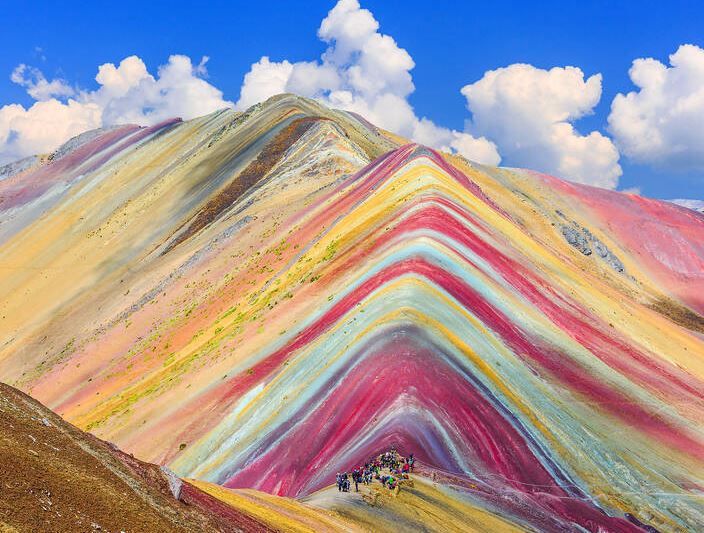
Our world is undeniably stunning, filled with captivating sights, from the deep blue oceans to towering mountains. Earth’s natural beauty is awe-inspiring, offering not just life but also incredible aesthetics. Yet, amidst this splendour lies an intriguing quirkiness. Unbelievably, lakes can be pink, beaches can be black, mountains can exhibit rainbow hues, and caves can emit an eerie glow. Explore these and other astonishing phenomena in our compilation of the planet’s most peculiar places.
Vinicunca, Peru
Peru’s Rainbow Mountain in South America resembles a creation from a psychedelic dream. Its unique, multicolored marble appearance results from centuries of sedimentary deposits. Hiking this extraordinary mountain takes roughly four hours, offering an unforgettable experience as you ascend what feels like a real-life rainbow.
Pamukkale, Turkey
Pamukkale, which translates to ‘cotton castle,’ is a fitting name for the captivating thermal waters in western Turkey. For centuries, these geothermal marvels have drawn visitors seeking rejuvenation. Designated as a UNESCO World Heritage site, the area now receives proper maintenance and protection. While the nearby Hierapolis ruins might not live up to expectations, the enchanting Cotton Castle consistently delights visitors with its natural wonder.
Red Beach, China
China’s Red Beach in Panjin presents an astonishing sight that appears almost surreal, reminiscent of a scene from a heavily-edited film. Instead of the typical marsh colors, a deep crimson hue dominates the landscape. This unique phenomenon is located within the world’s largest wetland, known for its peculiarities. The vibrant red colour is attributed to the hardy Suaeda salsa plant, one of the few species capable of thriving in highly alkaline soil. While the science is intriguing, the sheer beauty of the sight is what truly captivates.
Waitomo Caves, New Zealand
Caves are typically known as “natural underground chambers,” implying a lack of light. However, New Zealand’s Waitomo Caves defy this norm. They are illuminated by countless glowworms, creating a uniquely romantic ambiance in this subterranean realm. Unless, of course, you have a fear of glowworms.
Jervis Bay, Australia
Australia’s Jervis Bay boasts the world’s whitest sandy beach, but it’s not just the sand that draws visitors. This 102-square-kilometer oceanic bay is renowned for its mesmerizing bioluminescence. Here, masses of plankton emit a captivating glow in the dark, creating an ethereal spectacle. Known as noctiluca or ‘sea sparkle,’ this phenomenon results from a chemical reaction that generates excitement and vibration, illuminating the water. While bioluminescence is more common in warmer months, Jervis Bay offers the chance to witness it year-round.